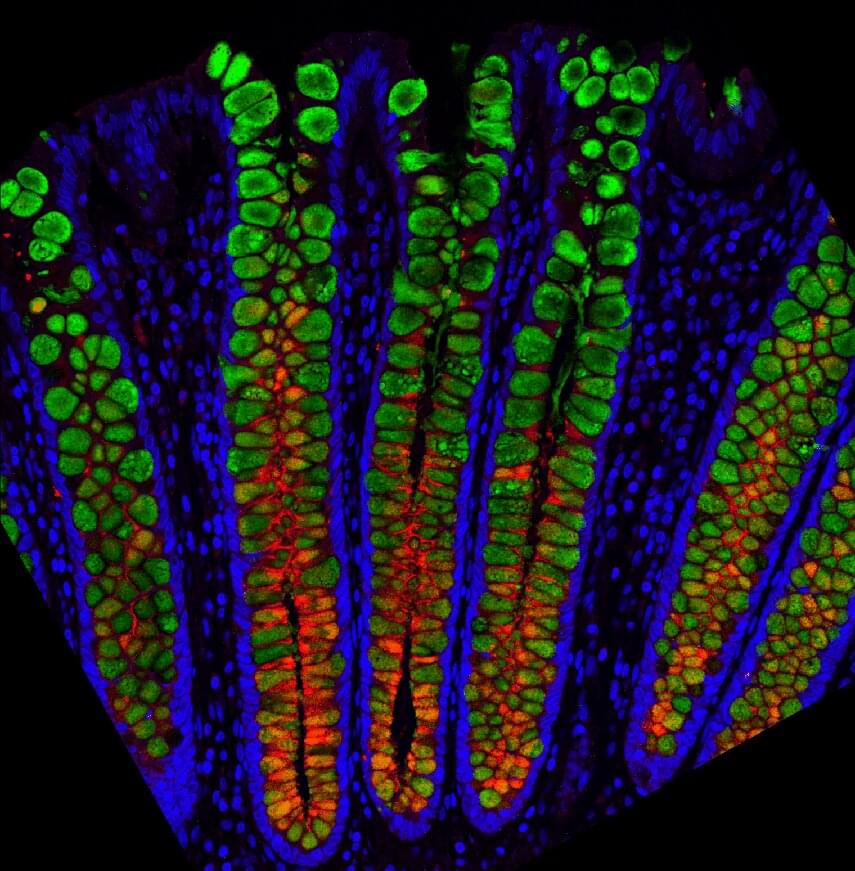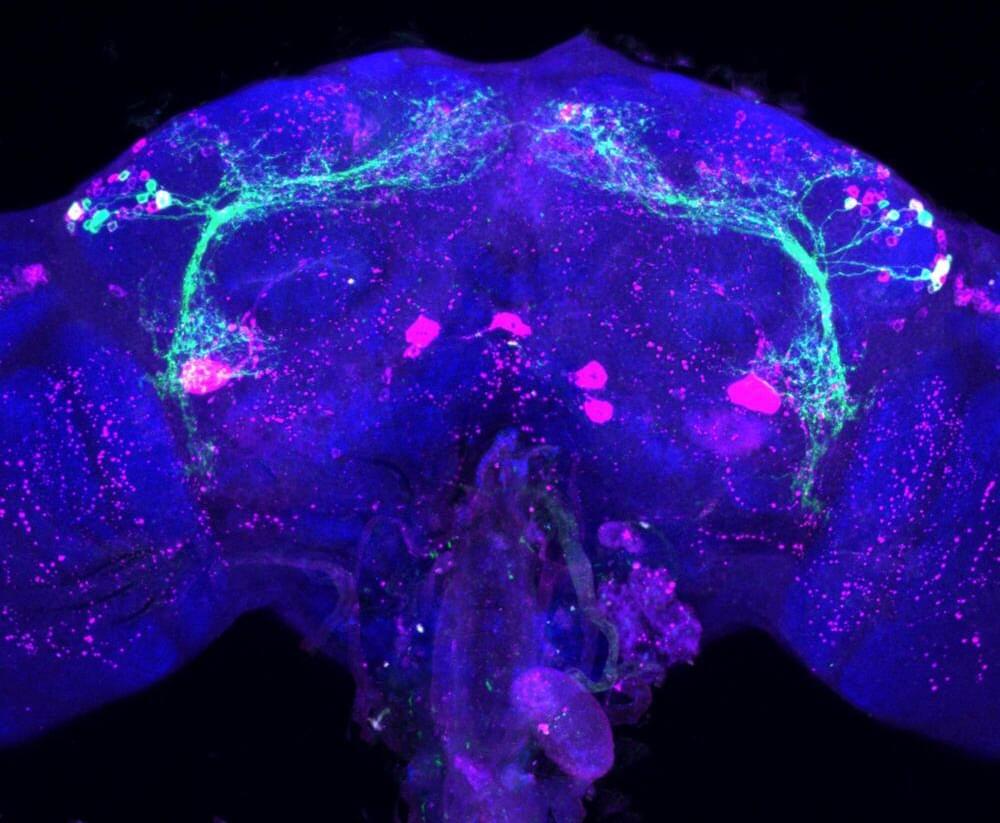Archive for the ‘health’ category: Page 163
Feb 19, 2022
Scientists map entire human gut at single cell resolution
Posted by Paul Battista in categories: biotech/medical, health
If you get nervous, you might feel it in your gut. If you eat chili, your gut might revolt, but your friend can eat anything and feel great. You can pop ibuprofen like candy with no ill effects, but your friend’s belly might bleed and might get no pain relief. Why is this? The quick answer is because we’re all different. The next questions are how different exactly, and what do these differences mean for health and disease? Answering these is much more difficult, but the UNC School of Medicine lab of Scott Magness, Ph.D., is revealing some interesting scientific answers.
For the first time, the Magness lab used entire human GI tracts from three organ donors to show how cell types differ across all regions of the intestines, to shed light on cellular functions, and to show gene expression differences between these cells and between individuals.
This work, published in Cellular and Molecular Gastroenterology and Hepatology, opens the door to exploring the many facets of gut health in a much more precise manner at greater resolution than ever before.
Feb 18, 2022
This scientist busts myths about how humans burn calories—and why
Posted by Alan R. Light in categories: food, health
Some interesting new information on how humans use energy and why exercise is not necessarily useful for losing weight (though it can help prevent gaining weight in the first place and of course is good for health).
I’m still curious why I accidentally lost about 30 pounds without intending to while I was eating probably twice as much as normal when I spent three months at the South Pole (2007−08). Did the cold increase my brown fat and my metabolism? Did it have something to do with unpolluted air and water? Was it a difference in the food, most of which was from New Zealand? Was it the high altitude (equivalent to about 10,500 feet at the equator)? Did the roughly 30 pounds of extra clothing I wore every day somehow trigger weight loss to “maintain” my previous weight? Something else?
As this example shows, there is still a great deal we can learn about these questions which are crucial to maintaining human health.
Continue reading “This scientist busts myths about how humans burn calories—and why” »
Feb 17, 2022
Temperature and reproduction link holds promise for insect control
Posted by Saúl Morales Rodriguéz in categories: food, health, neuroscience
Scientists have uncovered a set of neurons in fruit flies that shut down in cold temperatures and slow reproduction, a system conserved in many insects, including mosquitoes, which could provide a target for pest control.
Their study, published Feb. 16 in the journal Current Biology, takes a step toward understanding how a fly’s brain contributes to sensing the cold and limiting reproduction. Insects and animals, including many mammals, curb reproduction in the winter to protect their newborns from being exposed to harsh winter conditions.
The study has public health and agricultural implications, as tapping into environmentally-dependent mechanisms that influence reproduction in mosquitoes and crop pests may offer new control strategies. Mosquitoes act as reservoirs for the malaria-causing Plasmodium falciparum parasite, which spend the winter inside them.
Feb 14, 2022
City Air is Just as Dangerous to Your Health as it was 20 Years Ago States The Lancet
Posted by Len Rosen in categories: biotech/medical, government, health
Urban air pollution exposure is an ongoing critical challenge for humanity today because the majority of us live in cities. A just-published study in The Lancet Planetary Health reports that 2.5 billion live in urban areas where particulate matter levels exceed World Health Organization (WHO) safety guidelines causing more than 1.8 million attributed deaths annually. The study reports that “the global health burden of ambient fine particulate matter is increasing annually” and is associated with mortality from cardiovascular, respiratory, and lung diseases including cancer. And in terms of chronic diseases, particulate matter in the air contributes to asthma, bronchitis and emphysema, and seen as the leading environmental risk humans face today.
What is particulate matter? The Canadian government defines it as airborne particles that can be solid or liquid. Particulate matter comes from natural and human sources. The natural ones can be seen when volcanoes erupt spewing ash and other aerosols high into the atmosphere. But far more dangerous because of the sheer volume, is human-produced particulate matter coming from smokestacks, tailpipes, power plants, recently tilled fields, tires running across asphalt and concrete roads, and other human activities that release fine particles into the wind. The lighter and smaller the particle, the greater the threat. That’s because fine particulate matter is easier to inhale. It’s also easier to enter the pores of leaves in plants, and easier as liquid aerosols to bind to our buildings and bridges and other infrastructure where its acidic nature causes corrosion.
A particle of 2.5 micrometres (equivalent to 0.00009843 inches) or less is a public health threat. The U.S. Environmental Protection Agency tracks aerosol pollution at this size and on its site notes that particulate matter smaller than 2.5 micrometres has been declining for two decades. The Lancet study contradicts this finding noting that globally levels of airborne particulate matter have changed very little in twenty years. And where’s the greatest rise? In the cities of Southeast Asia.
Feb 14, 2022
Why Indoor Air Quality Is a Global Health Concern
Posted by Len Rosen in category: health
Airborne pollutants including viruses, mould, bacteria, dust, and harmful gasses cause millions of deaths annually. Solutions are available.
Feb 13, 2022
Bright indoor light during daytime may lower blood sugar, improve energy expenditure
Posted by Shubham Ghosh Roy in categories: biotech/medical, health
Bright indoor lighting during daytime.
According to a new study published in Diabetologia, Insulin-resistant volunteers’ postprandial substrate processing, energy expenditure, and thermoregulation are all affected by the indoor light environment in a time-dependent manner. Further Optimization of indoor lighting to a brighter during daytime hours and dimmer in the evening may provide cardiometabolic benefits.
Artificial light is available 24 hours a day in today’s civilization, and most individuals are exposed to electrical light and light-emitting screens during the dark part of the natural light/dark cycle. Suboptimal lighting has been linked to negative metabolic impacts, and changing indoor lighting to more closely mirror the natural light/dark cycle has the potential to improve metabolic health.
Feb 8, 2022
Dr. Stephani Otte, Ph.D. — Chan Zuckerberg Initiative — Measuring Human Biology in Action
Posted by Ira S. Pastor in categories: biotech/medical, education, health, neuroscience

Measuring Human Biology in Action, To Cure, Prevent Or Manage All Diseases — Dr. Stephani Otte, Ph.D., Science Program Officer, Imaging, Chan Zuckerberg Initiative.
Dr. Stephani Otte, Ph.D is Science Program Officer, Imaging, at the Chan Zuckerberg Initiative (https://chanzuckerberg.com/), who leads the organization’s Imaging program and is focused on the creation, dissemination, optimization, and standardization of transformative imaging technologies.
Feb 7, 2022
What is Model Monitoring?
Posted by Gemechu Taye in categories: food, health, robotics/AI
The AI revolution is here. Machine learning (ML) and artificial intelligence are used in virtually every industry today to revolutionize everything from reducing food waste to achieving better health outcomes. In all, IDC forecasts that global enterprise spending on AI will eclipse $204 billion by 2025.
Unfortunately, investments in needed infrastructure may not be keeping pace. Many enterprises are shipping AI blind or relying on outdated model monitoring approaches to catch issues with models in production.
In order to understand the scope of the problem and provide insights on potential solutions, Arize AI recently conducted a survey of 945 data scientists, engineers, executives, and others in the industry. The results speak to a distinct need for better tools to quickly visualize where and why problems are emerging and enable faster root cause analysis when models fail.
Feb 7, 2022
Electrical spinal implant helps paralysed man have child — BBC News
Posted by Raphael Ramos in category: health

David M’zee was 22 when an injury damaged his spine, leaving him paralysed 12 years ago.
In 2017, an electrical implant to his spine enabled him to stand and walk slowly by boosting the nerve signals to his legs.
Continue reading “Electrical spinal implant helps paralysed man have child — BBC News” »















